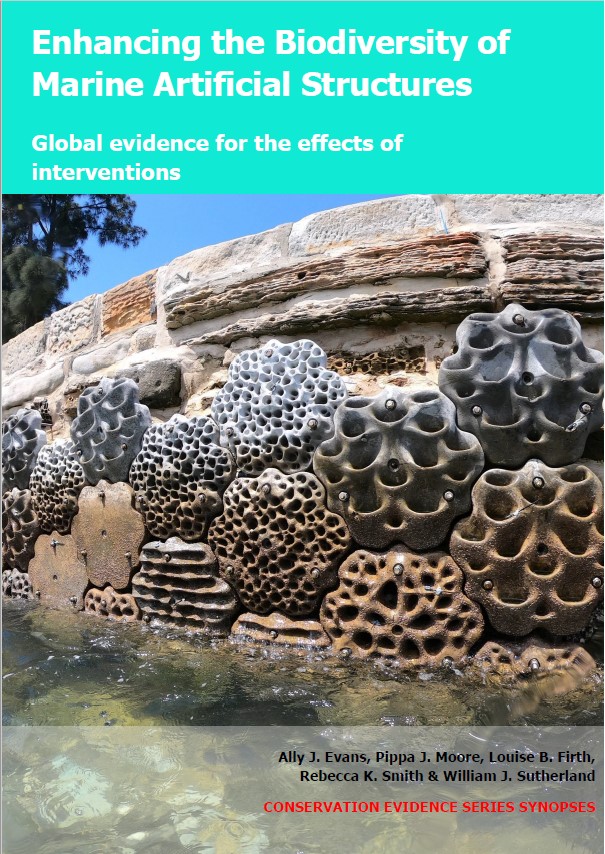Create natural rocky reef topography on intertidal artificial structures
-
Overall effectiveness category Awaiting assessment
-
Number of studies: 2
View assessment score
Hide assessment score
How is the evidence assessed?
-
Effectiveness
not assessed -
Certainty
not assessed -
Harms
not assessed
Study locations
Supporting evidence from individual studies
A replicated, randomized, controlled study in 2016–2017 on three intertidal seawalls in the Clyde and Forth estuaries and on open coastline in the English Channel, UK (MacArthur et al. 2019) found that creating natural rocky reef topography on the seawalls did not increase the macroalgae and invertebrate species richness on seawall surfaces, but increased invertebrate abundances at one of three sites. After 18 months, macroalgae and mobile invertebrate species richness was similar on settlement plates with and without natural rocky reef topography (both 1 species/plate). Barnacle (Cirripedia) and mobile invertebrate abundances were higher on plates with topography than without at one site (barnacles: 72 vs 34% cover; mobiles: 3 vs 1 individuals/plate), but were statistically similar at two sites (barnacles: 48–93 vs 22–83%; mobiles: 1 vs 2–3/plate). Concrete settlement plates (150 × 150 mm) were made with and without natural rocky reef topography moulded from digital scans of a natural boulder surface. Eight plates with topography and eight without were randomly arranged at upper-midshore on each of three vertical concrete seawalls in April–May 2016. Macroalgae and invertebrates on plates were counted from photographs over 18 months.
Study and other actions testedA study in 2019 on two intertidal breakwaters on open coastline in the Irish Sea, UK (Evans et al. 2021) reported that natural rocky reef topography created on the breakwaters supported macroalgae (Ulva spp.) and limpets (Patella spp.). Over four months, green macroalgae and adult and juvenile limpets were recorded on settlement plates with natural rocky reef topography. Limpets were seen using shaded grooves and water-retaining depressions created by the natural topography. Concrete settlement plates (250 × 250 mm) were made with natural rocky reef topography moulded from digital scans of natural reef surfaces. Natural surfaces were selected based on the biodiversity they supported and measured features of the underlying topography. They were designed to target high species richness, rare species, or species that were common on natural reefs but not on artificial structures. Plates with natural topography were attached on horizontal surfaces of two granite boulder breakwaters in August 2019 (A. Evans, pers. comms.). Macroalgae and invertebrates on plates were counted during low tide over four months.
Study and other actions tested
Where has this evidence come from?
List of journals searched by synopsis
All the journals searched for all synopses
This Action forms part of the Action Synopsis:
Biodiversity of Marine Artificial Structures
Biodiversity of Marine Artificial Structures - Published 2021
Enhancing biodiversity of marine artificial structures synopsis





)_2023.JPG)














